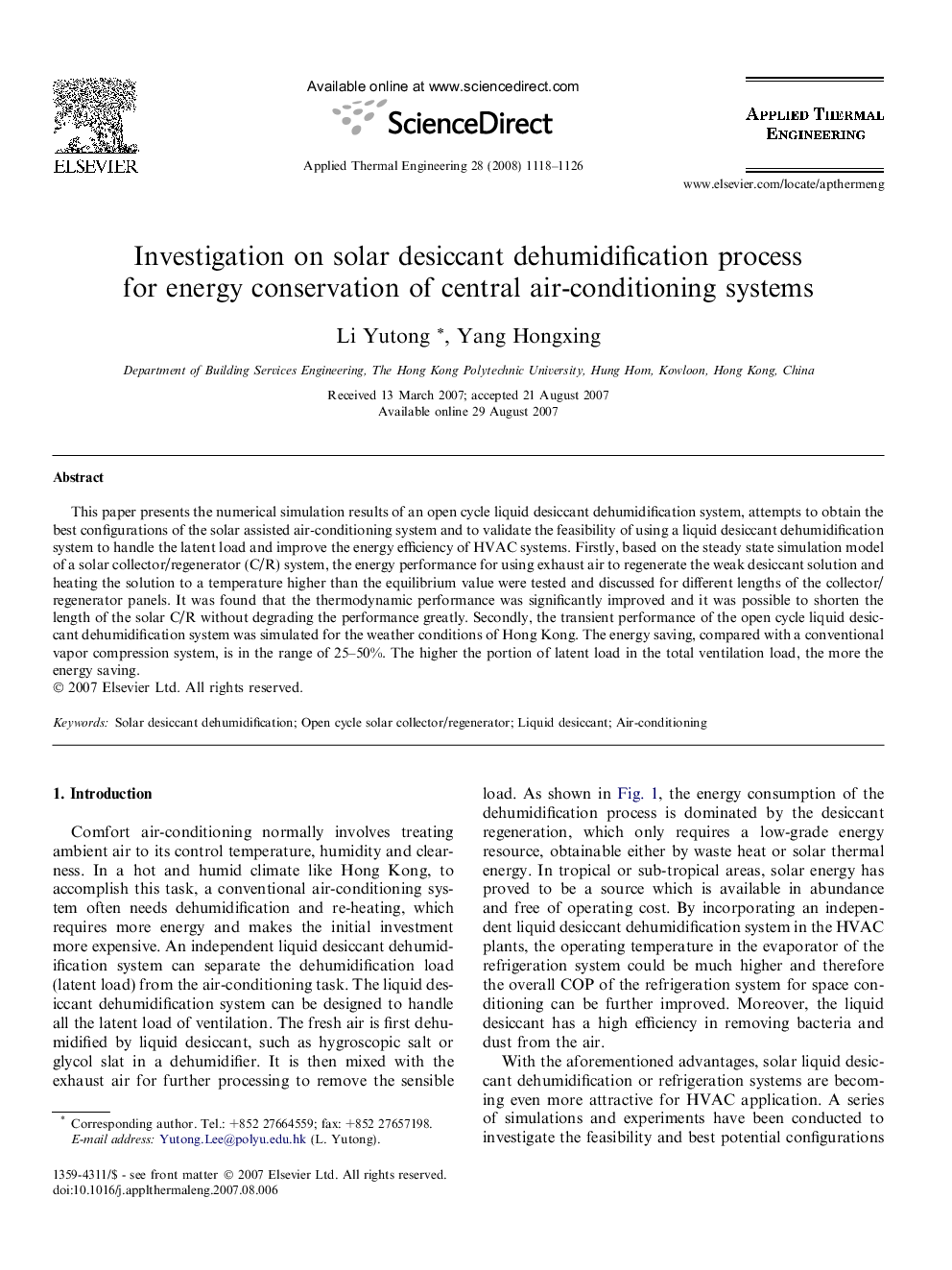| Article ID | Journal | Published Year | Pages | File Type |
|---|---|---|---|---|
| 649055 | Applied Thermal Engineering | 2008 | 9 Pages |
This paper presents the numerical simulation results of an open cycle liquid desiccant dehumidification system, attempts to obtain the best configurations of the solar assisted air-conditioning system and to validate the feasibility of using a liquid desiccant dehumidification system to handle the latent load and improve the energy efficiency of HVAC systems. Firstly, based on the steady state simulation model of a solar collector/regenerator (C/R) system, the energy performance for using exhaust air to regenerate the weak desiccant solution and heating the solution to a temperature higher than the equilibrium value were tested and discussed for different lengths of the collector/regenerator panels. It was found that the thermodynamic performance was significantly improved and it was possible to shorten the length of the solar C/R without degrading the performance greatly. Secondly, the transient performance of the open cycle liquid desiccant dehumidification system was simulated for the weather conditions of Hong Kong. The energy saving, compared with a conventional vapor compression system, is in the range of 25–50%. The higher the portion of latent load in the total ventilation load, the more the energy saving.
